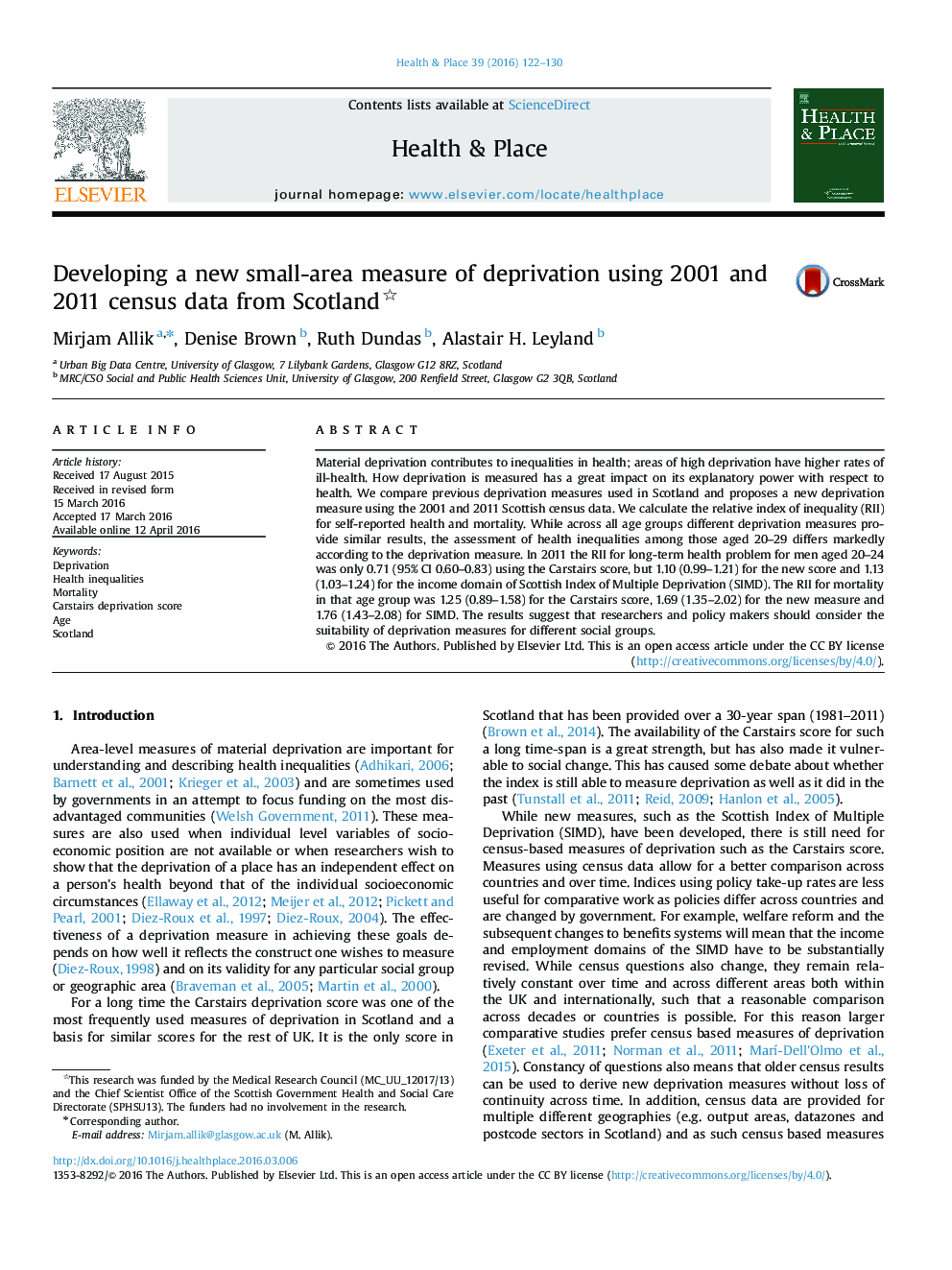| Article ID | Journal | Published Year | Pages | File Type |
|---|---|---|---|---|
| 7457477 | Health & Place | 2016 | 9 Pages |
Abstract
Material deprivation contributes to inequalities in health; areas of high deprivation have higher rates of ill-health. How deprivation is measured has a great impact on its explanatory power with respect to health. We compare previous deprivation measures used in Scotland and proposes a new deprivation measure using the 2001 and 2011 Scottish census data. We calculate the relative index of inequality (RII) for self-reported health and mortality. While across all age groups different deprivation measures provide similar results, the assessment of health inequalities among those aged 20-29 differs markedly according to the deprivation measure. In 2011 the RII for long-term health problem for men aged 20-24 was only 0.71 (95% CI 0.60-0.83) using the Carstairs score, but 1.10 (0.99-1.21) for the new score and 1.13 (1.03-1.24) for the income domain of Scottish Index of Multiple Deprivation (SIMD). The RII for mortality in that age group was 1.25 (0.89-1.58) for the Carstairs score, 1.69 (1.35-2.02) for the new measure and 1.76 (1.43-2.08) for SIMD. The results suggest that researchers and policy makers should consider the suitability of deprivation measures for different social groups.
Related Topics
Health Sciences
Medicine and Dentistry
Public Health and Health Policy
Authors
Mirjam Allik, Denise Brown, Ruth Dundas, Alastair H. Leyland,
